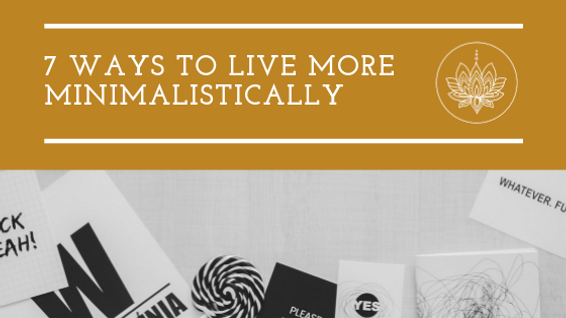You would have to have been living under rock to not have heard about the term ‘minimalism’. Minimalism is based on the concept of living with less. It entails discarding excess possessions and focusing more on experiences than collecting things. Moreover, it’s about altering your mindset in order to obtain more purpose and peace.
Joshua Becker, the blogger behind Becoming Minimalist, says that “minimalism is the intentional promotion of the things we most value and the removal of anything that distracts us from it.”
While the concept of minimalism may simply seem like the latest millennial trend, when implemented for the right reasons, it can have significant benefits. These include:
- Financial freedom
- Only keeping possesions that add value
- Spending more on experiences rather than things
- Increased happiness and less stress
- Implementing a green lifestyle
- Developing better relationships
A further benefit of minimalism is that you don’t need to discard everything you own. You can pick and choose according to what suits you and your lifestyle. In line with this, we at Mind and Body Counseling Associates, Reno, Nevada, have put together the following seven steps to get you closer to a minimalistic way of life.
#1 Figure Out Your Why
First and foremost, write down the reasons why you wish to explore minimalism. This will be essential to refer back to when you begin to encounter the more challenging aspects of living minimalistically. Whatever you write down will help keep you focused on what is important.
#2 Get Rid of Duplicates
Gather duplicates from around your house and place them in a box. While sorting through your possessions, you can also make use of the 90/90 rule developed by The Minimalists, Joshua Fields Millburn and Ryan Nicodemus.
“Look at a possession. Have you used that item in the last 90 days? If you haven’t, will you use it in the next 90? If not, then it’s okay to let go.”
Once you have placed all of these items in a box, label it and store it away. After 30 days, if you haven’t required anything from the box – or can’t even remember what you put in there – donate it.
#3 Create Clutter-Free Areas
This could be a kitchen counter, a nighstand, or a drawer. Try to keep this area clutter-free for some time and, if you enjoy the result, use this as inspiration to increase the size of the area. For example, a clutter-free countertop can become a clutter-free room, which can become a clutter-free, minimalistic home.
#4 Travel With Less
Planning a trip? Why not try packing for the half the time you will be away. You can always wash any clothes you need to rewear, or simply wear them more than once.
#5 Simplify Your Wardrobe
You may or may not have heard of Project 333. This entails wearing only 33 items for three months – including clothes, shoes, jewellery, and accessories. While it may seem intense, the thousands of people who have already tried it boast about how much easier their lives have become. In order to maintain this way of life, when tempted to purchase something, ask yourself “does this bring meaning to my life”? You’ll find that, for most things, the answer will be ‘no’.
#6 Reduce Your Meal Variety
We spend a lot of time thinking about what we are going to eat for lunch, make for dinner, or buy at the grocery store. Try simplifying this by eating the same breakfast and lunch for a week. You could also rotate between two to three dinner choices. Chat about this experiment with your family at the end of the week and discuss how you would like to move forward.
#7 Develop a $1000 Emergency Fund
Emergency funds simplify everything and reduce stress. If you have debt, only pay the minimum amount due until you are able to put away $1000. If you aren’t in debt, set aside money on a regular basis until you reach $1000.
Try these one at a time and continue to take tiny steps to lean into the life you crave. Even if it takes 10 years to get to where you want to be, the benefits begin immediately.


